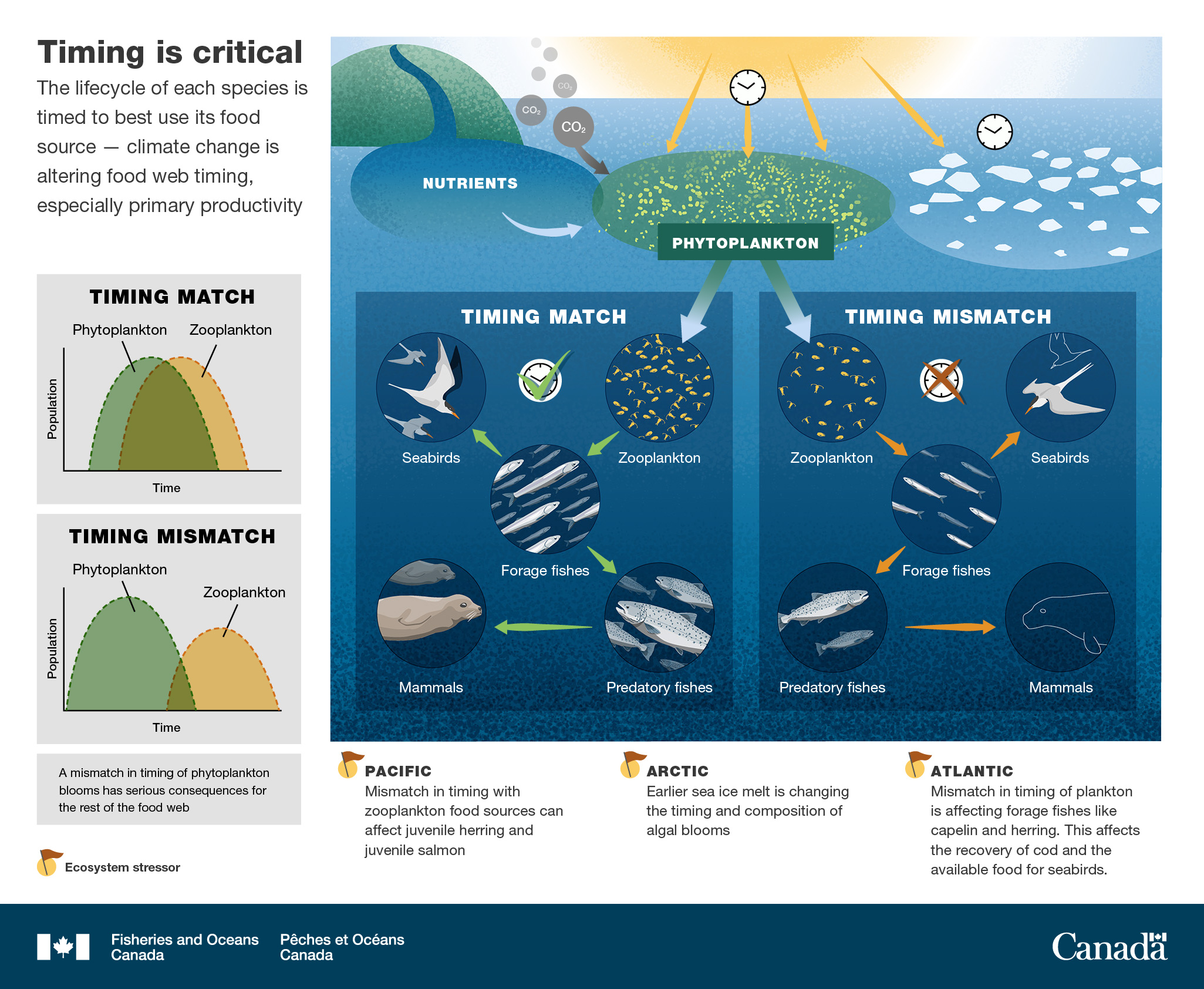Infographic: Timing is critical

Description: Timing is critical
Changing oceanographic conditions are altering the timing of spring phytoplankton blooms—with consequences to food availability for other species. Two stacked graphs on the left show the difference when the timing of a phytoplankton bloom matches the timing of zooplankton hatching and when the timing mismatches. In the top graph of population over time, the timing is a match when the phytoplankton occurs just before the zooplankton hatch so there is a larger population of zooplankton. In the bottom graph of population over time, the phytoplankton occur earlier and overlap less with the zooplankton leading to a smaller population of zooplankton. A drawing on the right, shows how this has serious consequences for the rest of the food web. At the top, the ocean environment is shown with the factors that impact the timing of phytoplankton blooms. Nutrients flow from the land into the ocean through rivers, carbon dioxide is absorbed from the atmosphere, and sunlight shines from above. The timing of sea ice break-up also impacts phytoplankton blooms as shown by a clock. The bottom of the figure shows the consequences of a timing match and a timing mismatch for the ecosystem. When there is a timing match, the larger population of zooplankton provide food for forage fish which provide food for predatory fish and seabirds. The predatory fish can then be prey for marine mammals like seals. When there is a timing mismatch, there is a lower population of zooplankton leading to a lower population of forage fish. This impacts the populations of predatory fish, seabirds, and marine mammals. For the Pacific, Arctic, and Atlantic oceans there are different ecosystem stressors which can cause timing mismatches, and this can have different impacts for each ocean’s ecosystems.
Text
Timing is critical
The lifecycle of each species is timed to best use its food source - climate change is altering food web timing, especially primary productivity
Timing match
Phytoplankton
Zooplankton
Timing mismatch
Phytoplankton
Zooplankton
A mismatch in timing of phytoplankton blooms has serious consequences for the rest of the food web
Pacific
Mismatch in timing with zooplankton food sources can affect juvenile herring and juvenile salmon
Arctic
Earlier sea ice melt is changing the timing and composition of algal blooms
Atlantic
Mismatch in timing of plankton is affecting forage fishes like capelin and herring. This affects the recovery of cod and the available food for seabirds
Timing match / Timing mismatch
- Phytoplankton
- Zooplankton
- Forage fishes
- Seabirds
- Predatory fishes
- Mammals
Nutrients
CO2
Related links
- Date modified: